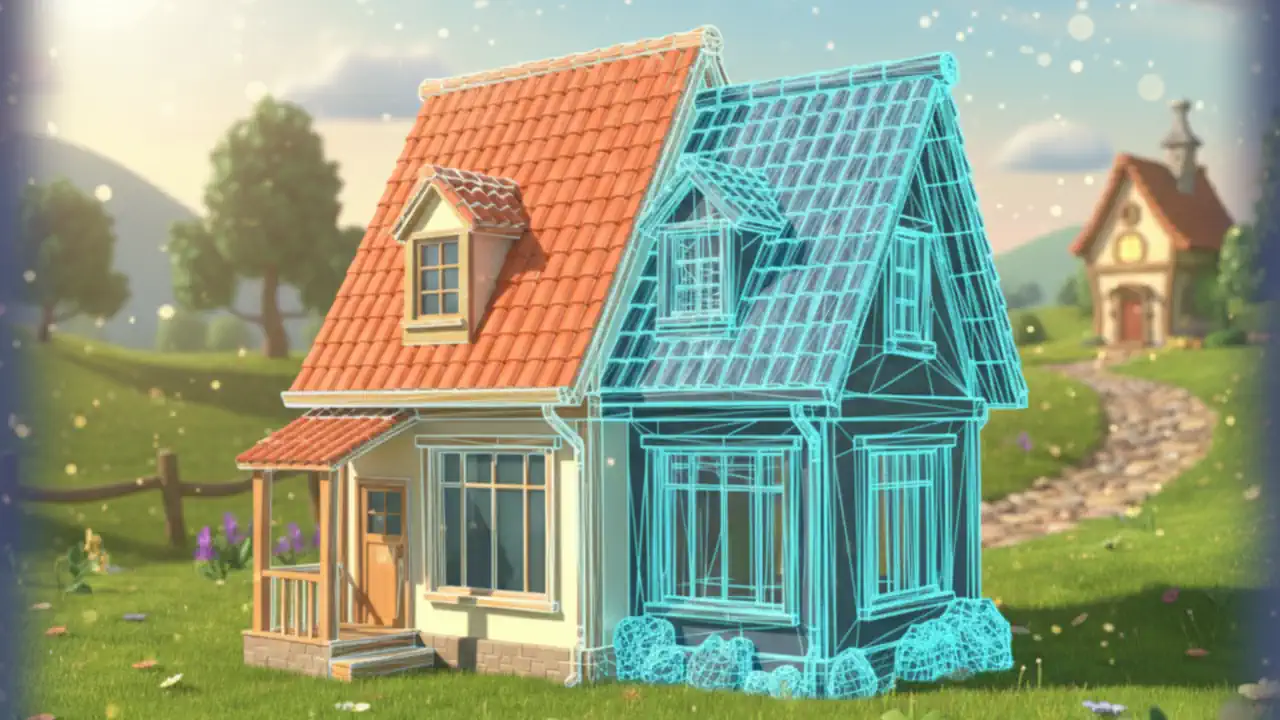Autoconverter, our powerful tool for importing, exporting, and converting 3D mesh and solid file formats, has long been a staple for professionals in 3D design, CAD, and visualization workflows. Supporting a wide array of formats like STL, OBJ, STEP, and more, it streamlines the process of handling complex 3D data. In a recent update it introduces groundbreaking support for polygonal faces, including quads (four-sided polygons) and general n-gons (polygons with more than four sides).
This enhancement addresses a key limitation in 3D mesh handling, allowing users to work with more flexible and efficient geometry representations. By enabling direct handling of non-triangular faces, the update opens up new possibilities for mesh editing, file optimization, and interoperability across diverse 3D ecosystems.

Understanding Polygonal Faces in 3D Meshes
In 3D modeling, meshes are constructed from polygons, which are flat surfaces defined by vertices and edges. Traditionally, many tools focused on triangles (tris) due to their simplicity in rendering and computation. However, quads and n-gons offer greater versatility. Quads provide a balanced structure ideal for subdivision and deformation, while n-gons allow for complex shapes without excessive subdivision during creation.
The Autoconverter update now natively supports these polygonal types, meaning users can import, convert, and export meshes without forced triangulation, preserving the original geometry's intent. This is particularly useful in workflows involving CAD, animation, and game development, where maintaining polygon integrity can prevent artifacts and improve performance.
File Formats Supporting Quads and Polygons
One of the major benefits of this update is improved compatibility with various 3D file formats. While some formats are limited to basic quad support, others fully embrace polygons, enabling richer data exchange. Below, we outline the key formats affected:
| File Format | Quads | N-Gons |
|---|---|---|
| 3DM (Rhinoceros 3D Model) | ✅ Native quad support | ❌ Not supported - auto-triangulated |
| 3MF (3D Manufacturing) | ❌ Only triangles | ❌ Triangulation needed |
| DAE (Collada) | ✅ Full support | ✅ Full support |
| DWG (AutoCAD Drawing) | ✅ Supported in 3D solids/meshes | ❌ Not supported |
| DXF (Drawing Exchange) | ✅ Supported for mesh quads | ❌ No n-gon capability |
| FBX (Filmbox) | ✅ Full support | ✅ Full support |
| GLTF/GLB (GL Transmission) | ❌ Split into triangles | ❌ Polygons triangulation |
| IGES/IGS (Graphics Exchange) | ✅ Planar quads only | ✅ Planar n-gons only |
| JSON (CityJSON) | ✅ Supported | ✅ Geospatial polygonal geometry |
| OBJ (Wavefront Object) | ✅ Native support | ✅ Any-sided polygons natively |
| OFF (Object File) | ✅ Arbitrary polygon support | ✅ Full n-gon support |
| PLY (Stanford Polygon) | ✅ Supported | ✅ With per-face metadata (normals, colors) |
| SKP (SketchUp) | ✅ Native | ✅ Non-planar via hidden triangles |
| STEP/STP (Exchange of Product) | ✅ Planar quads only | ✅ Planar polygons only |
| STL (Srereolithography) | ❌ Two triangles | ❌ Face triangulation required |
| USD (Universal Scene) | ✅ Full support | ✅ Full support |
| VRML/WRL (Virtual Reality) | ✅ Supported for virtual worlds | ✅ Full n-gon support |
| X (DirectX 3D) | ✅ Supported | ✅ Full polygonal support for VFX |
| X3D (Extensible 3D) | ✅ Advanced mesh support | ✅ Full n-gon & quad support |
This distinction highlights how Autoconverter's update bridges gaps between restrictive and flexible formats, reducing data loss during conversions.
Benefits of Polygonal Faces in 3D Meshes
Incorporating quads and n-gons into 3D meshes offers significant advantages, especially in professional pipelines. The Autoconverter update amplifies these by allowing direct manipulation without preprocessing:
- Simplified Mesh Editing: Polygonal faces, particularly n-gons, enable quicker modeling by filling complex areas (e.g., holes or irregular shapes) without manual triangulation. This streamlines workflows in tools like Blender or Maya, where users can select and edit faces by side count, reducing iteration time.
- Reduced File Size: By using higher-sided polygons, meshes require fewer faces overall compared to triangulated equivalents. For instance, a single n-gon can represent a surface that would otherwise need multiple tris or quads, leading to smaller file footprints - ideal for storage, transfer, and real-time applications like games.
These benefits make polygonal support a game-changer for efficiency, particularly in large-scale projects involving millions of faces.
Limitations in STEP and IGES Formats
While the update expands possibilities, users should note constraints in certain formats. STEP and IGES, staples in engineering and manufacturing, support polygonal faces but are limited to planar quads and polygons. This means:
- Faces must lie flat on a single plane; non-planar (curved or warped) polygons are not supported and will be approximated during import/export.
- Only quads (four sides) or simple polygons are allowed - no complex n-gons with excessive sides or curvature.
- This restriction stems from their focus on precise, manufacturable geometry rather than freeform artistic meshes.
Autoconverter handles these limitations gracefully by offering triangulation options, ensuring compatibility without data corruption.
Conclusion
The recent Autoconverter update introducing support for polygonal faces marks a pivotal advancement in 3D file conversion tools. By accommodating quads and n-gons across a spectrum of formats - from quad-only standards like DXF and DWG to polygon-rich ones like SKP and USD - it empowers users to leverage the full potential of flexible meshes. The benefits of simplified editing and reduced file sizes, tempered by awareness of format-specific limitations like those in STEP and IGES, position this update as essential for CAD professionals, 3D artists, and developers alike.
👉 As 3D workflows evolve toward more efficient and interoperable systems, Autoconverter continues to lead the way, making complex geometry accessible and optimized for modern demands. For those already using the tool, this enhancement promises smoother pipelines and innovative possibilities in 3D design.